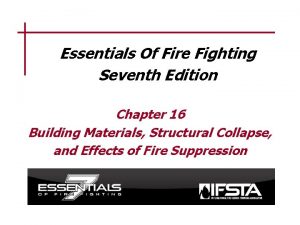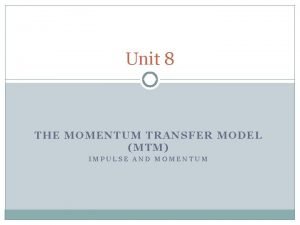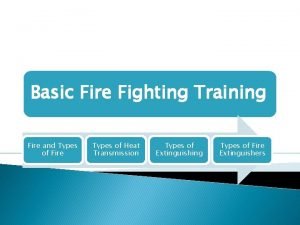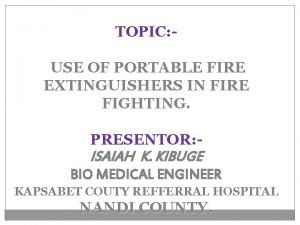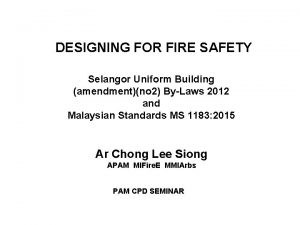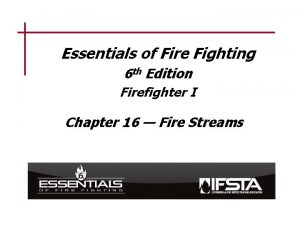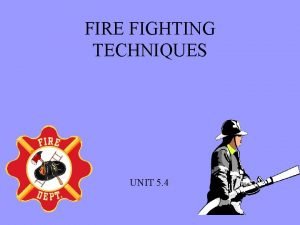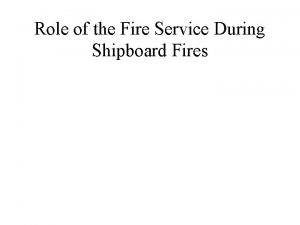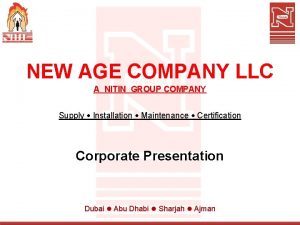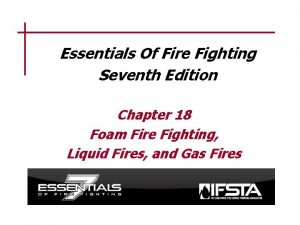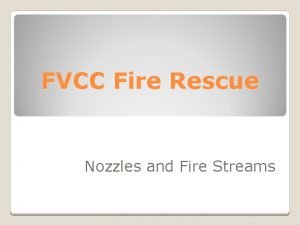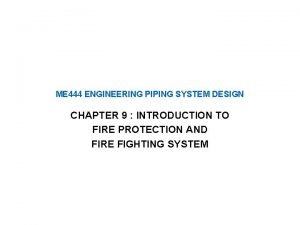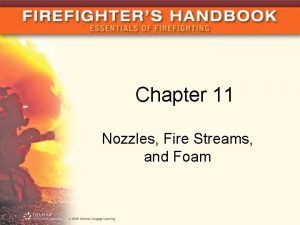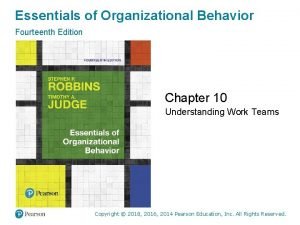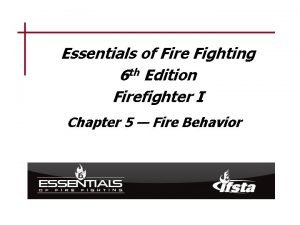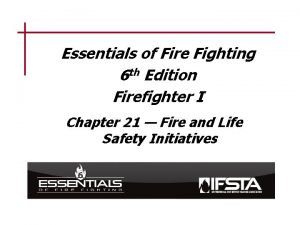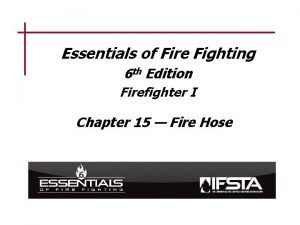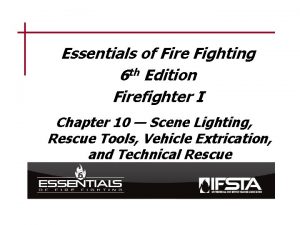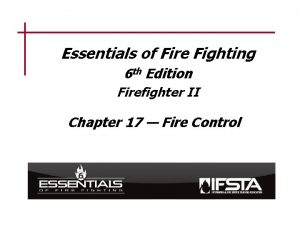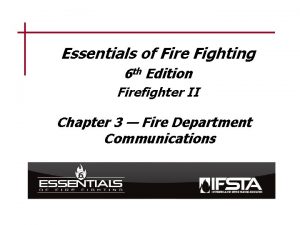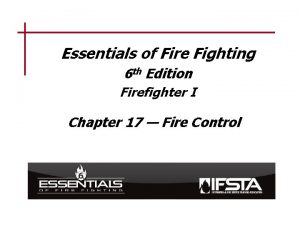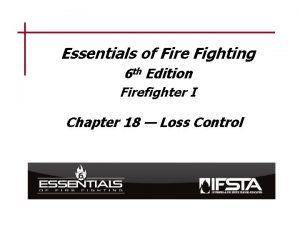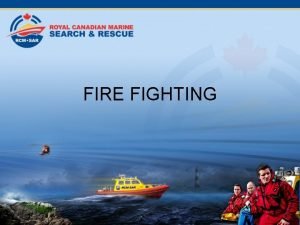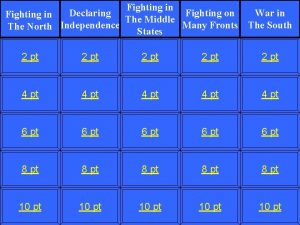Essentials of Fire Fighting 6 th Edition Firefighter



















- Slides: 19

Essentials of Fire Fighting 6 th Edition Firefighter I Chapter 18 — Loss Control

Learning Objective 1 Explain the philosophy of loss control. 18– 1

Loss control activities minimize loss to property before, during, and after a fire. Minimize damage to structure Eliminate reignition Reduce time to repair, reopen Reduce stress on occupants Create goodwill in community Minimize financial loss 18– 2

The are two types of damage it is important to know about. Secondary – Results from fire suppression Primary – Caused by fire, smoke 18– 3

Two tactics firefighters use are intended to reduce property damage. Salvage Overhaul • Aid in reducing primary and secondary damage • Searching for and extinguishing hidden or remaining fires after main body extinguished 18– 4

REVIEW QUESTION How does the philosophy of loss control impact fire suppression? 18– 5

Learning Objective 2 Describe the ways preincident planning impacts loss control. 18– 6

Preincident planning can help identify special loss control-related concerns. Most effective, least destructive means of access Most effective means of evacuating or protecting occupants Location, protection of vital business records When, how built-in suppression systems are supported, used How to protect building contents from smoke, water damage 18– 7

Preincident plans vary depending on the type of occupancy. Residential occupancies Commercial properties Buildings with highvalue contents 18– 8

REVIEW QUESTION In what ways can preincident planning influence loss control? 18– 9

Learning Objective 3 Determine appropriate salvage procedures. 18– 10

Learning Objective 4 Compare and contrast different types of salvage covers. 18– 11

Salvage begins upon arrival on scene and continues until the last unit leaves. May occur while suppression underway if On-scene resources sufficient Situation permits 18– 12

There are various ways to perform salvage and the choice of procedure depends on several factors. Ways to perfor m Factors 18– 13 • Cover contents with salvage covers during operations • Delay suppression to remove vital contents • Number of personnel available • Extent, location of fire • Type, size, quantity of contents • Current weather

Salvage procedures include three main methods of protecting contents. Moving contents to safe location in structure Protecting contents in place Removing contents from structure 18– 14

There are several salvage techniques firefighters should understand. Prevent furniture damage High point in furniture group 18– 15

Commercial occupancies may present unique challenges. Difficult to cover contents Stock susceptible to water damage Display shelves built Placed off floor Contents stacked too close to ceiling Still must be covered 18– 16

Water presents a number of challenges during salvage operations. Use covers to route to floor Cautions with high-piled stock Remove large quantities May ruin finishes 18– 17

REVIEW QUESTION What is the best way to determine appropriate salvage procedures? 18– 18
 Firefighter essentials 7th edition
Firefighter essentials 7th edition When fighting fires a firefighter must use great caution
When fighting fires a firefighter must use great caution What is the prefix for fire
What is the prefix for fire Fire fighting equipment onboard ship
Fire fighting equipment onboard ship Fire extinguisher in urdu
Fire extinguisher in urdu Starvation method of extinguishing fire
Starvation method of extinguishing fire Pressurized hydrant system malaysia
Pressurized hydrant system malaysia Broken stream nozzle
Broken stream nozzle Fire fighting techniques
Fire fighting techniques Foam pro 1600
Foam pro 1600 Shipboard fire fighting organization
Shipboard fire fighting organization Nitin group
Nitin group At a bulk transport incident firefighters must
At a bulk transport incident firefighters must Fire warden training ppt
Fire warden training ppt Fire streams
Fire streams Extinguishion
Extinguishion Cellar nozzle
Cellar nozzle Mechanical ventilation firefighting
Mechanical ventilation firefighting Essentials of organizational behavior 14th edition
Essentials of organizational behavior 14th edition Network security essentials 5th edition pdf
Network security essentials 5th edition pdf
